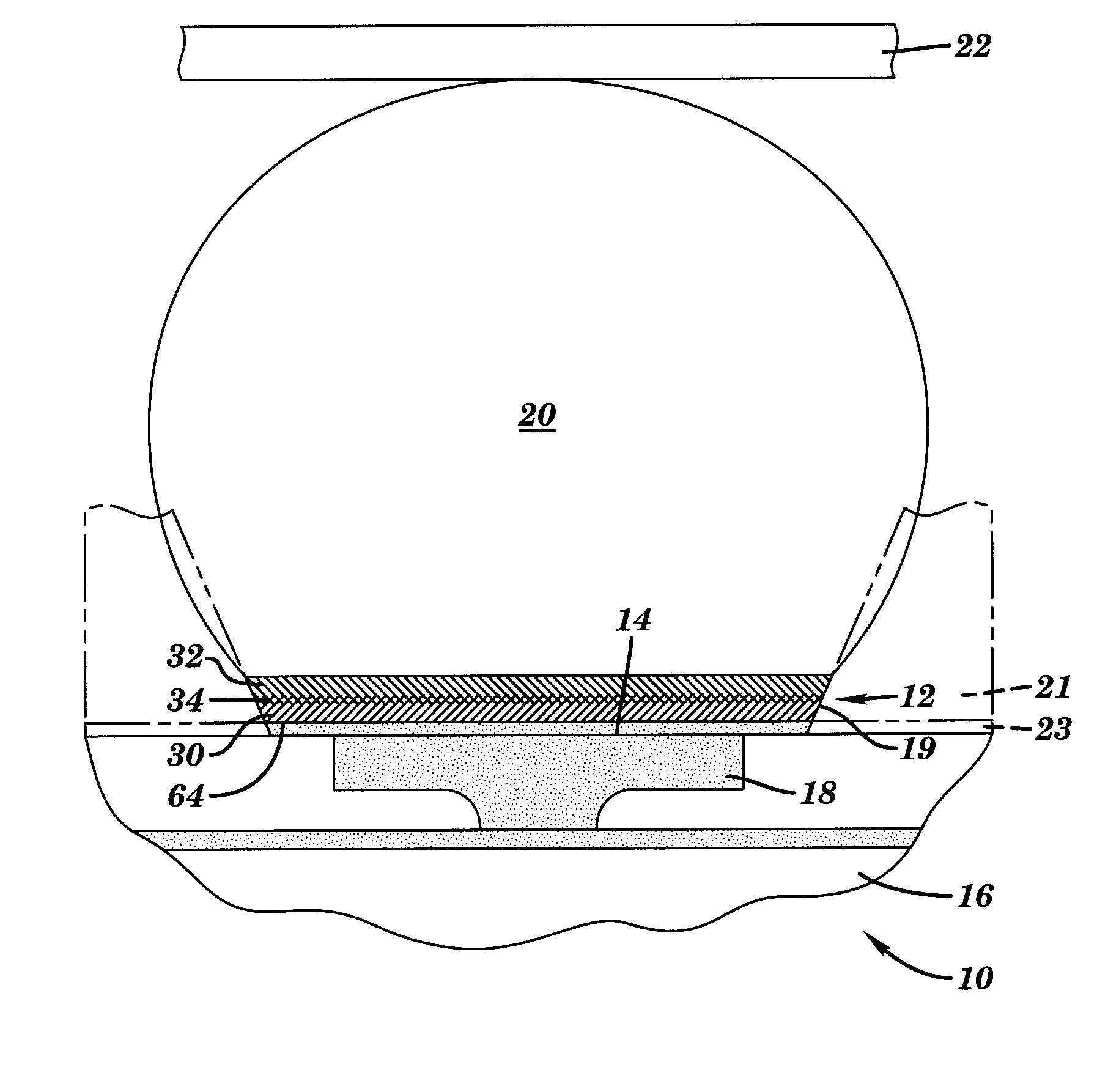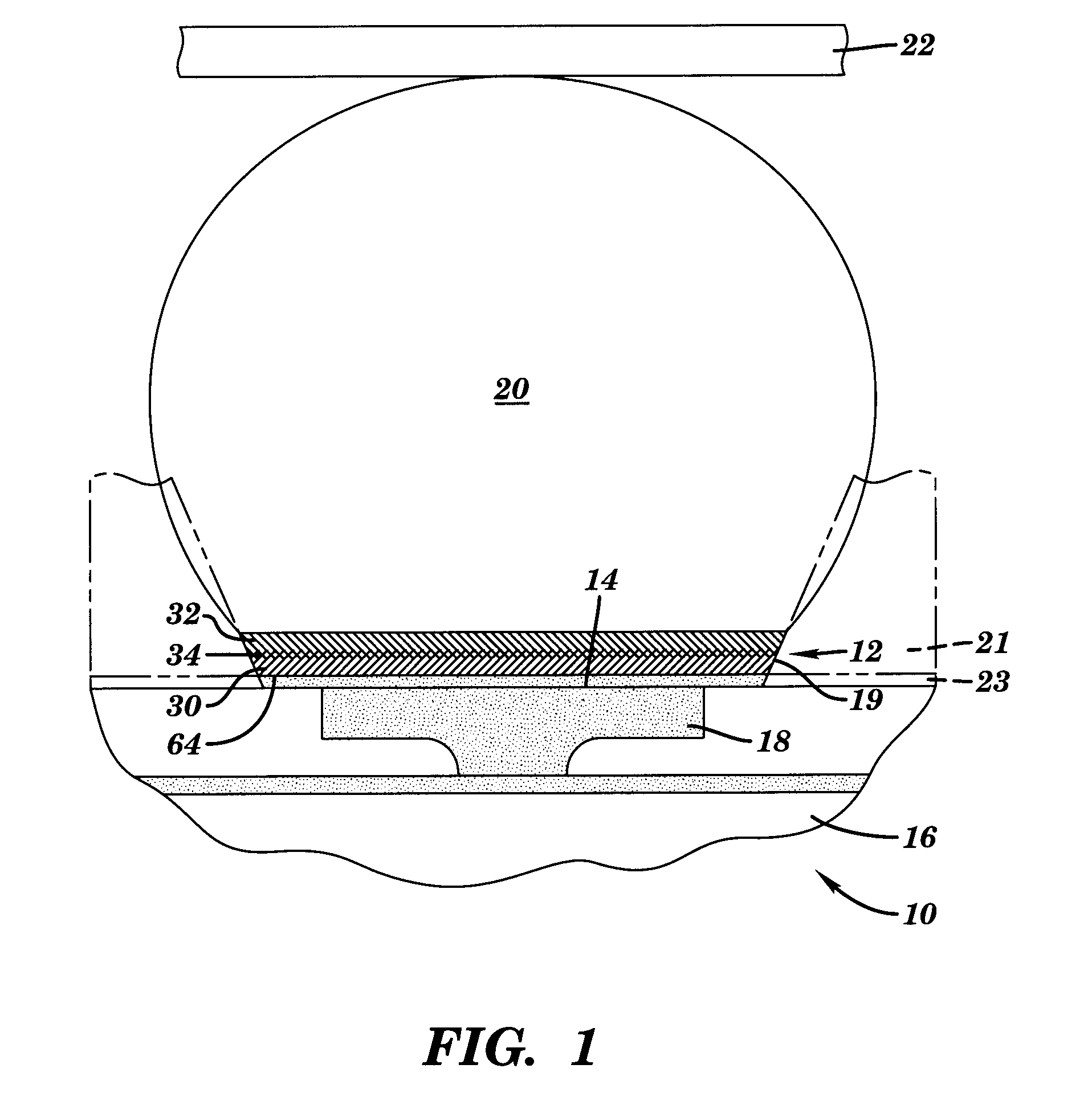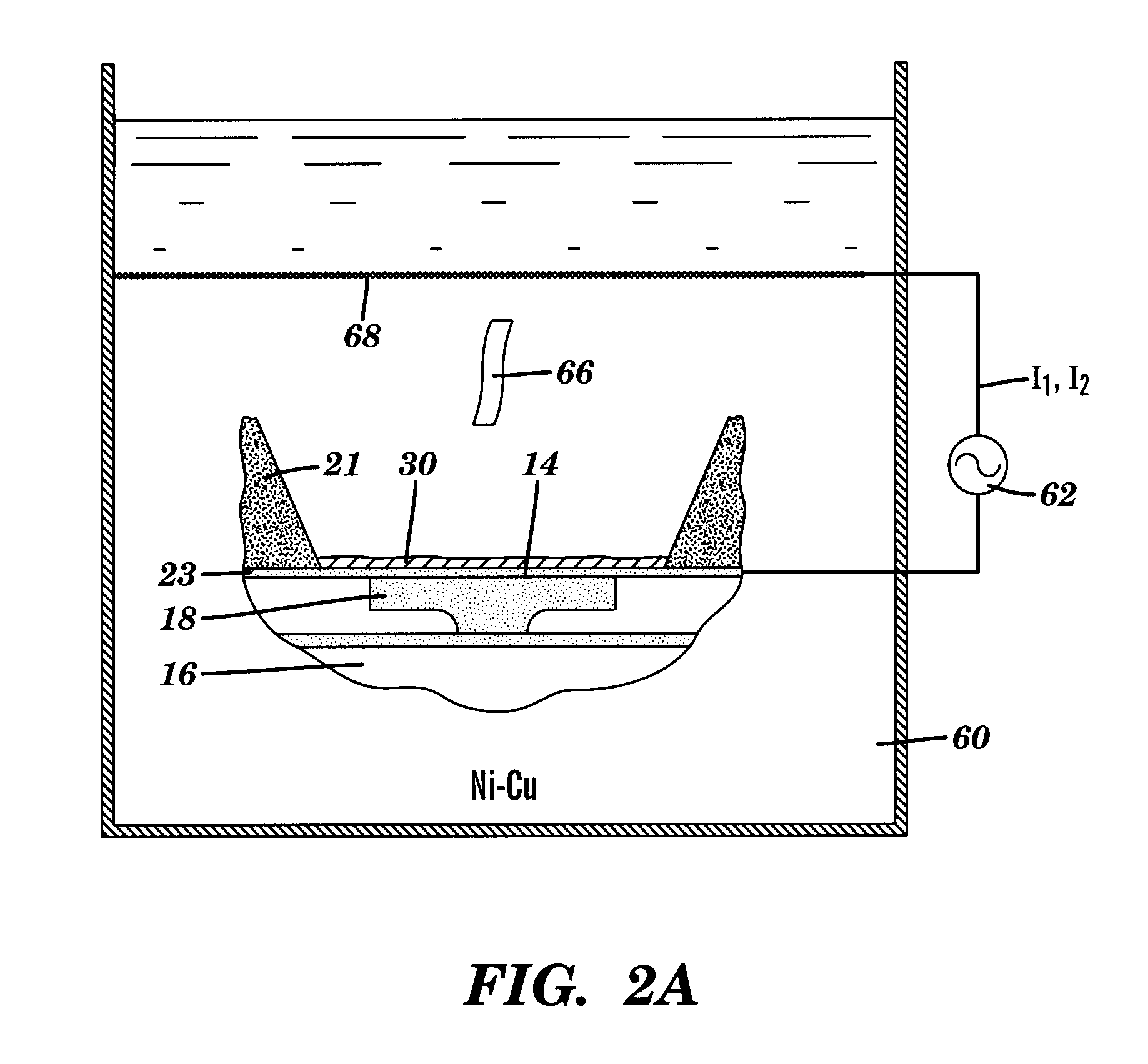Barrier for interconnect and method
a technology of interconnection and barrier, which is applied in the field of barriers for interconnections, can solve the problems of increasing the number of current densities required for next generation technologies, reducing the dimensions of devices, and increasing clock speeds, and reducing the limits of conventional interconnect technology. , to achieve the effect of extending the reliability of current cmos designs, enhancing protection against voiding and delamination, and increasing current densities
- Summary
- Abstract
- Description
- Claims
- Application Information
AI Technical Summary
Benefits of technology
Problems solved by technology
Method used
Image
Examples
Embodiment Construction
[0014]With reference to the accompanying drawings, FIG. 1 illustrates an interconnect 10 having a barrier 12 for preventing voiding and de-lamination in a device terminal 14 including an under bump metallurgy (UBM) seed layer 23 due to thermal diffusion and electro-migration of copper. In accordance with the invention, interconnect 10 includes device terminal 14 electrically connected to a semiconductor device 16, i.e., a via or contact 18 of semiconductor device 16. Device terminal 14 is formed in a patterned recess or hole 19 of a photoresist mask 21 (shown in phantom in FIG. 1). It should be recognized, however, that photoresist is an illustrative material, i.e., recess 19 may be provided in other material. All of photoresist mask 21 and UBM seed layer 23 outside of barrier 12 do not constitute part of the final device, but are shown in FIG. 1 in phantom for brevity. In one embodiment, recess 19 preferably has an aspect ratio, i.e., depth to width between 0.5 to 2.
[0015]In one em...
PUM
 Login to View More
Login to View More Abstract
Description
Claims
Application Information
 Login to View More
Login to View More - R&D
- Intellectual Property
- Life Sciences
- Materials
- Tech Scout
- Unparalleled Data Quality
- Higher Quality Content
- 60% Fewer Hallucinations
Browse by: Latest US Patents, China's latest patents, Technical Efficacy Thesaurus, Application Domain, Technology Topic, Popular Technical Reports.
© 2025 PatSnap. All rights reserved.Legal|Privacy policy|Modern Slavery Act Transparency Statement|Sitemap|About US| Contact US: help@patsnap.com



